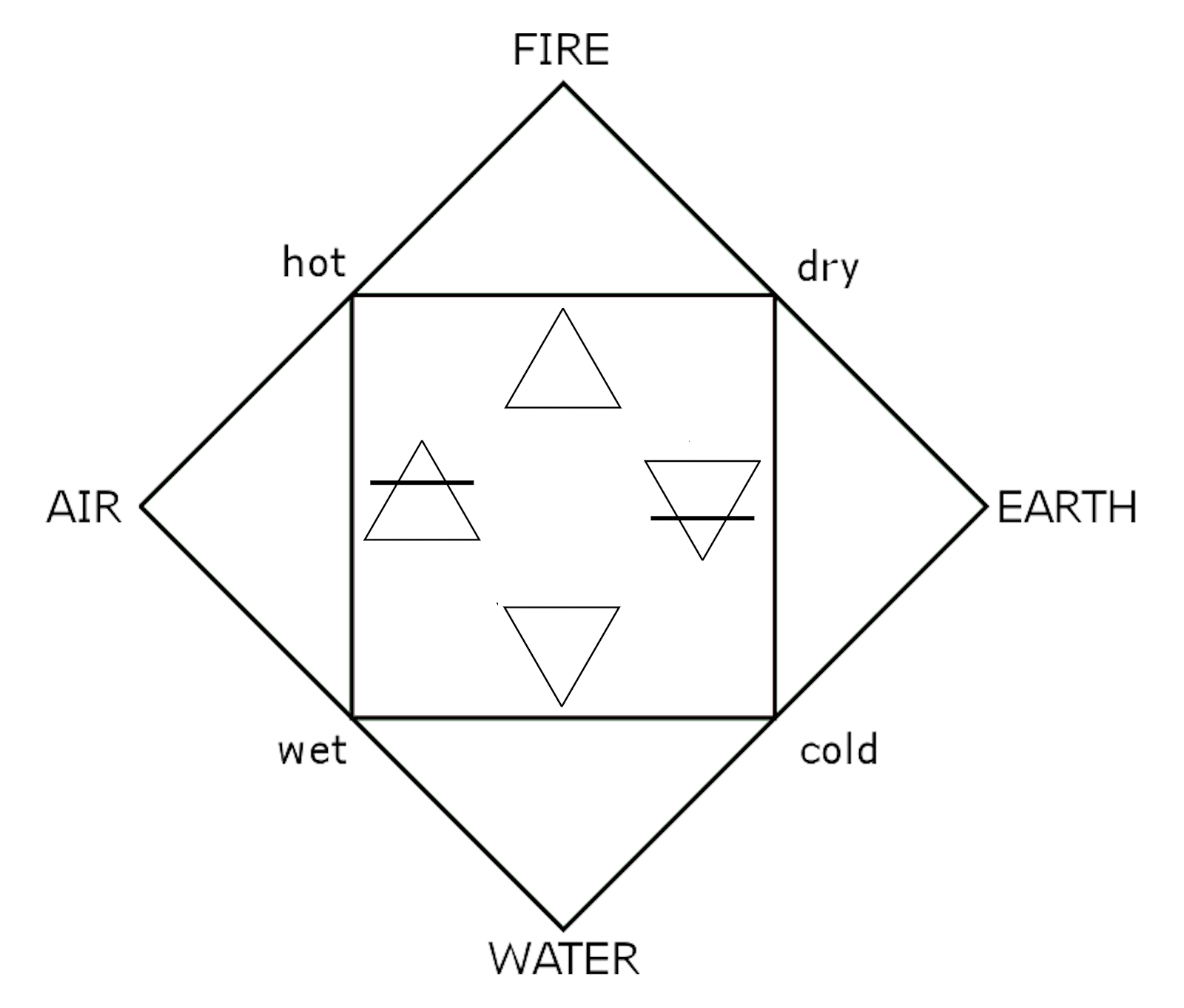The Four Elements


The Origins of the Four Elements ︎︎︎
From ancient civilizations to modern day, the colors and symbols of the four elements have represented the different aspects of nature and the forces of energy in our world. The idea that these four elements—Earth, Water, Air, and Fire—made up all matter was the cornerstone of philosophy, science, and medicine for two-thousand years.
Historians believe that as early as the 8th century BCE, ancient Greek philosophers of the Archaic period began formulating theories of the four classical elements. Although the Greeks believed that the four elements were unchanging in nature, everything was made up of these elements, held together or pushed apart by forces of attraction and repulsion, causing substances to appear to change. This is similar to what really happens with elements and all molecules at an atomic level.
To the ancient Greeks, the four elements described not only physical manifestations of the material world but essential qualities of human nature as well. For instance, the Earth, solid and substantial, was associated with the physical and sensual aspects of life. Water, flowing and ever-changing, denoted emotion and empathy. Air was not only the air we breathe and the atmosphere, but signified the mind, intelligence, and inspiration. Fire meant the Sun and flame; it also indicated creative passion and destructive zeal.
From ancient civilizations to modern day, the colors and symbols of the four elements have represented the different aspects of nature and the forces of energy in our world. The idea that these four elements—Earth, Water, Air, and Fire—made up all matter was the cornerstone of philosophy, science, and medicine for two-thousand years.
Historians believe that as early as the 8th century BCE, ancient Greek philosophers of the Archaic period began formulating theories of the four classical elements. Although the Greeks believed that the four elements were unchanging in nature, everything was made up of these elements, held together or pushed apart by forces of attraction and repulsion, causing substances to appear to change. This is similar to what really happens with elements and all molecules at an atomic level.
To the ancient Greeks, the four elements described not only physical manifestations of the material world but essential qualities of human nature as well. For instance, the Earth, solid and substantial, was associated with the physical and sensual aspects of life. Water, flowing and ever-changing, denoted emotion and empathy. Air was not only the air we breathe and the atmosphere, but signified the mind, intelligence, and inspiration. Fire meant the Sun and flame; it also indicated creative passion and destructive zeal.
